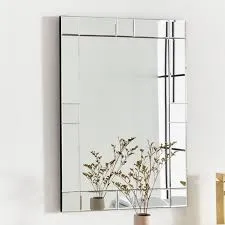

Exploring Low-E Glass Options Enhancing Energy Efficiency in Your Home
In the quest for energy efficiency and enhanced comfort in residential properties, one of the leading innovations in the glazing industry is Low-E (low emissivity) glass. This advanced glass technology has swiftly become a staple in building design, providing homeowners with a viable solution to reduce energy consumption while maintaining a pleasant indoor environment. This article delves into the various Low-E glass options available, their benefits, and how they can improve energy efficiency in any home.
What is Low-E Glass?
Low-E glass features a thin metallic coating that reflects heat while allowing natural light to pass through. Unlike traditional glass, which can absorb heat and lead to higher indoor temperatures, Low-E glass effectively minimizes the amount of infrared and ultraviolet light that transmits through the glass. This property not only helps in maintaining a comfortable indoor climate but also plays a significant role in protecting furniture, artwork, and flooring from fading due to sun exposure.
Types of Low-E Glass
Low-E glass is classified into two main types hard-coat and soft-coat glass.
1. Hard-Coat Low-E Glass This type has a thicker coating that is bonded to the glass surface during manufacturing and is typically more durable. It is best suited for colder climates since it allows a higher percentage of solar heat to enter the home, which can be beneficial during winter months. However, it is less effective in minimizing glare and UV rays compared to soft-coat options.
2. Soft-Coat Low-E Glass This variant is produced in a controlled environment, resulting in a finer, more reflective coating. Soft-coat Low-E glass excels in performance, offering superior insulation properties and significantly reducing glare and UV penetration. It is ideal for regions with extreme temperatures and is often used in high-performance windows.
Benefits of Low-E Glass
The advantages of incorporating Low-E glass into your home are manifold

- Energy Efficiency One of the primary benefits is the reduction in energy costs. By minimizing heat transfer, Low-E glass can help maintain consistent indoor temperatures, thereby reducing the reliance on heating and cooling systems. This efficiency translates into lower utility bills and a reduced carbon footprint.
- Comfort Low-E glass helps to prevent hot and cold spots within your home. By regulating indoor temperatures, homeowners enjoy a more comfortable living environment throughout the year.
- UV Protection Low-E coating can block up to 99% of harmful UV rays, protecting your interior furnishings from fading and degradation, extending the life of carpets, furniture, and decorative items.
- Glare Reduction With its ability to filter harsh sunlight, Low-E glass can significantly reduce glare in living spaces, making it more comfortable for activities such as watching television or working at a computer.
Selecting Low-E Glass for Your Home
When choosing Low-E glass for your home, it’s essential to consider factors such as local climate, orientation of your house, and personal preferences. Consulting with a professional can help you make informed decisions tailored to your specific needs. Additionally, various window manufacturers offer different grades of Low-E glass, each designed to meet specific energy performance ratings.
Moreover, when incorporated with modern window technologies, such as double or triple glazing, Low-E glass can offer even greater insulation, making it a worthwhile investment for both new constructions and retrofitting existing homes.
Conclusion
Low-E glass options represent a pivotal breakthrough in the realm of energy-efficient building materials. With their impressive array of benefits, including improved energy efficiency, comfort, and protection against UV damage, Low-E glass windows are an excellent choice for homeowners looking to enhance their living spaces while being environmentally conscious. As building standards evolve and the demand for sustainable living spaces increases, Low-E glass will undoubtedly play a crucial role in shaping the future of residential architecture. Whether you're constructing a new home or upgrading your current windows, consider Low-E glass options to foster a more energy-efficient and comfortable home environment.